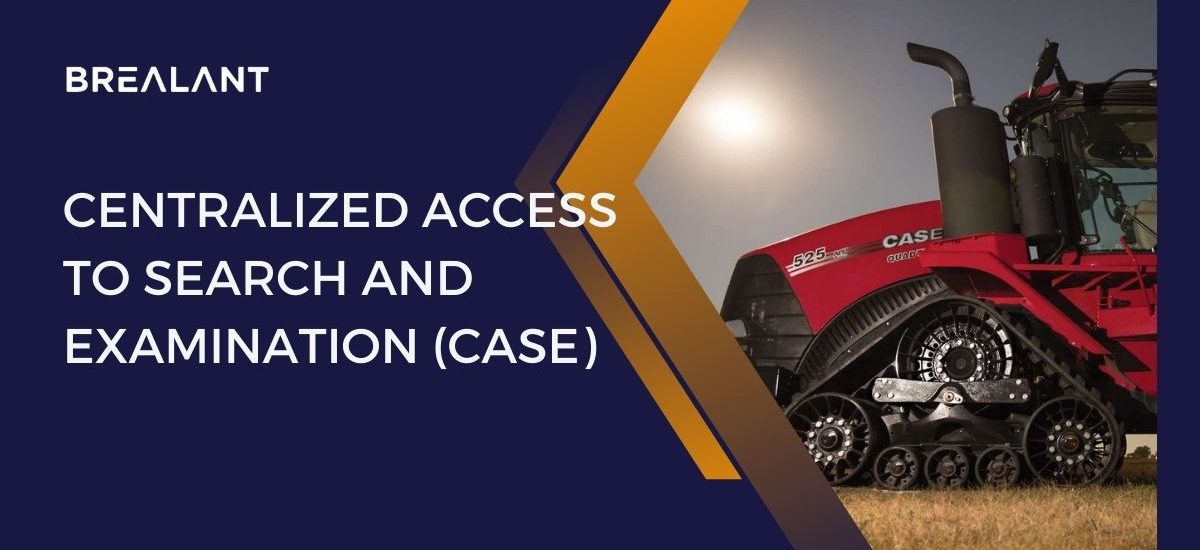In the ever-evolving intellectual property (IP) landscape, the World Intellectual Property Organization (WIPO) has been at the forefront of introducing innovative solutions to streamline and enhance the global IP system. One groundbreaking initiative is the Centralized Access to Search and Examination (CASE). This transformative approach promises to revolutionize the way patent applications are processed and examined, ushering in a new era of efficiency and collaboration in the world of intellectual property.
The Essence of CASE
CASE represents a paradigm shift in the traditional patent examination process. Traditionally, patent applications undergo examination in individual national or regional patent offices, leading to duplicative efforts and a need for uniformity in the evaluation process. Recognizing these challenges, WIPO has introduced CASE to centralize the search and examination of patent applications, creating a harmonized and streamlined system that benefits both applicants and patent offices.
Key Components of CASE
CASE comprises several vital components that work together to create a more efficient and consistent patent examination process:
- Centralized Search Expertise: One of the fundamental aspects of CASE is the concentration of search expertise. WIPO has established a team of highly skilled and specialized examiners who conduct comprehensive searches for prior art on a global scale. This centralized approach ensures that the examination process is thorough and that relevant prior art is identified, contributing to the overall quality of the examination.
- Efficient Resource Utilization: By centralizing the search and examination processes, CASE optimizes the use of resources. Patent offices worldwide can benefit from the expertise the centralized team provides, reducing the need for individual offices to duplicate efforts. This results in cost savings and allows patent offices to allocate resources more efficiently, focusing on other crucial aspects of their operations.
- Uniform Standards: CASE promotes uniformity in the examination of patent applications. The centralized team follows standardized procedures and criteria, ensuring application evaluation consistency. This is a significant improvement over the previous fragmented approach, where different patent offices might apply varying standards, leading to potential inconsistencies and uncertainties for patent applicants.
- Enhanced Collaboration: WIPO’s CASE encourages collaboration among patent offices. The centralized system facilitates the exchange of information and best practices among participating offices, fostering a global community of expertise. This collaborative approach contributes to the continuous improvement of the patent examination process and promotes knowledge-sharing on emerging trends and technologies.
Benefits of CASE for Stakeholders
The implementation of CASE brings a myriad of benefits to various stakeholders in the intellectual property ecosystem:
- Applicants: CASE offers a more predictable and streamlined examination process for inventors and businesses seeking patent protection. The centralized search ensures a comprehensive prior art review, reducing the likelihood of challenges to the validity of granted patents. Additionally, a more efficient examination process means quicker decisions on patentability, allowing applicants to bring their inventions to market sooner.
- Patent Offices: National and regional patent offices benefit from the expertise provided by WIPO’s centralized team. This enables them to overcome resource constraints and improve the quality and efficiency of their examination processes. The uniform standards promoted by CASE enhance the credibility of patent offices and contribute to the overall integrity of the global patent system.
- Global Innovation Ecosystem: CASE is crucial in supporting the global innovation ecosystem. Streamlining the patent examination process facilitates the timely grant of valid patents, encouraging innovation and technological advancements. The uniformity in examination standards also promotes a level playing field for inventors and businesses worldwide.
- WIPO and the International Community: As the architect of CASE, WIPO reinforces its position as a key player in shaping the future of intellectual property. The organization’s commitment to fostering collaboration and efficiency aligns with its broader mission of promoting innovation and creativity on a global scale. The international community benefits from a more cohesive, interconnected patent system that transcends borders.
Challenges and Considerations
While CASE represents a significant leap forward in patent examination, specific challenges and considerations must be addressed:
- Integration with National Laws: CASE’s success depends on its seamless integration with national and regional patent laws. Harmonizing procedures and standards is crucial to ensuring that the centralized examination aligns with the legal frameworks of participating countries.
- Data Security and Privacy: The centralized nature of CASE raises concerns about the security and privacy of sensitive information. WIPO must implement robust measures to safeguard the confidentiality of patent applications and ensure compliance with data protection regulations.
- Adoption by Member States: CASE’s success hinges on widespread adoption by WIPO member states. Convincing individual countries to embrace this centralized approach requires effective communication about the benefits and assurances regarding its compatibility with national interests.
Conclusion
WIPO’s Centralized Access to Search and Examination (CASE) marks a pivotal moment in the evolution of the global intellectual property system. By addressing the challenges of the traditional patent examination process, CASE introduces a model that is not only more efficient but also fosters collaboration and uniformity on an international scale. As patent offices and applicants embrace this innovative approach, the promise of a more streamlined, predictable, and interconnected global patent system comes closer to realization. WIPO’s leadership in this initiative underscores its commitment to advancing innovation and creativity, ultimately benefiting inventors, businesses, and the global community.










